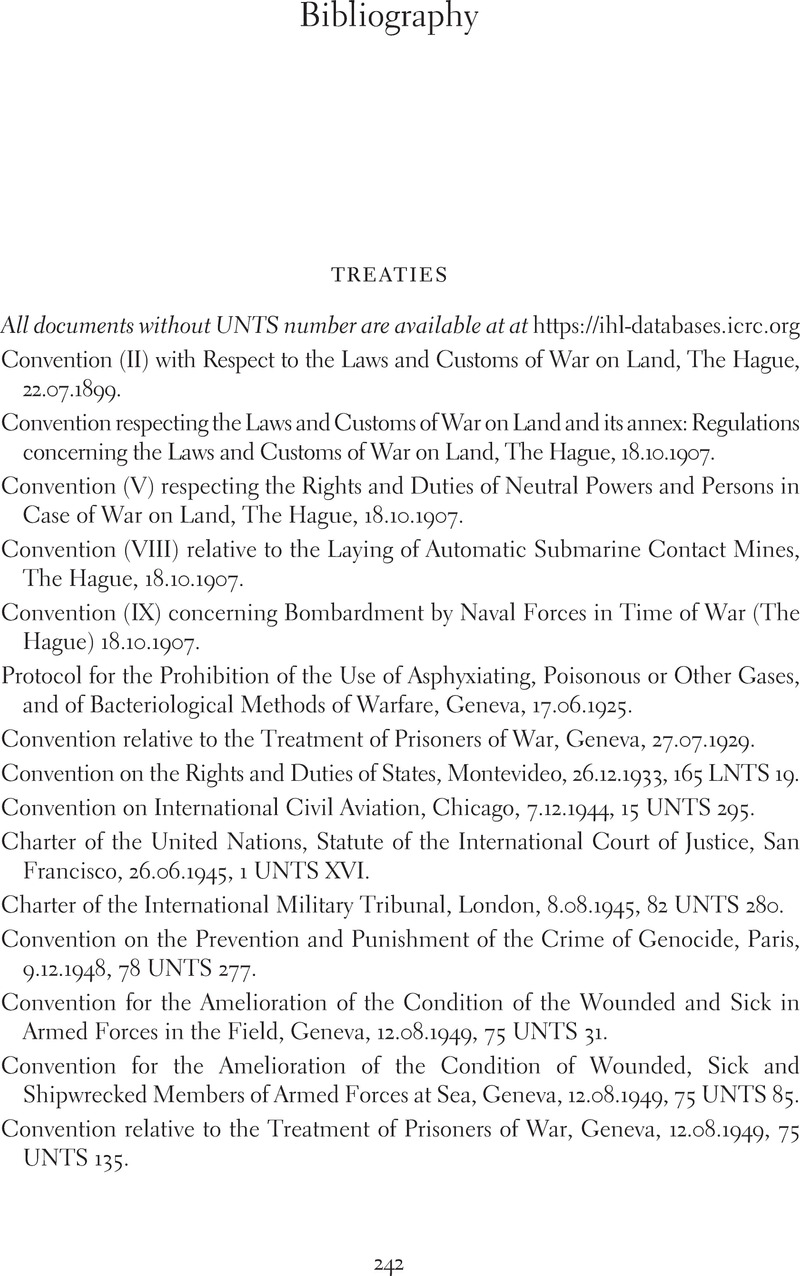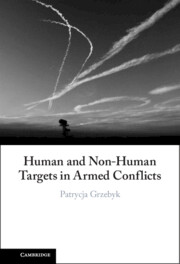Book contents
- Human and Non-Human Targets in Armed Conflicts
- Human and Non-Human Targets in Armed Conflicts
- Copyright page
- Contents
- Abbreviations
- Introduction
- 1 Sources, Scope, and Application of the Law on Legitimate Targets in Armed Conflicts
- 2 Human Targets
- 3 Non-Human Targets
- 4 Problems in Lawful Target Elimination
- 5 Individual Criminal Responsibility for Violations of the Law of Targeting
- Final Remarks: Towards a Unified Approach to Target Selection
- Bibliography
- Index
- References
Bibliography
Published online by Cambridge University Press: 17 March 2022
- Human and Non-Human Targets in Armed Conflicts
- Human and Non-Human Targets in Armed Conflicts
- Copyright page
- Contents
- Abbreviations
- Introduction
- 1 Sources, Scope, and Application of the Law on Legitimate Targets in Armed Conflicts
- 2 Human Targets
- 3 Non-Human Targets
- 4 Problems in Lawful Target Elimination
- 5 Individual Criminal Responsibility for Violations of the Law of Targeting
- Final Remarks: Towards a Unified Approach to Target Selection
- Bibliography
- Index
- References
Summary

- Type
- Chapter
- Information
- Human and Non-Human Targets in Armed Conflicts , pp. 242 - 274Publisher: Cambridge University PressPrint publication year: 2022



